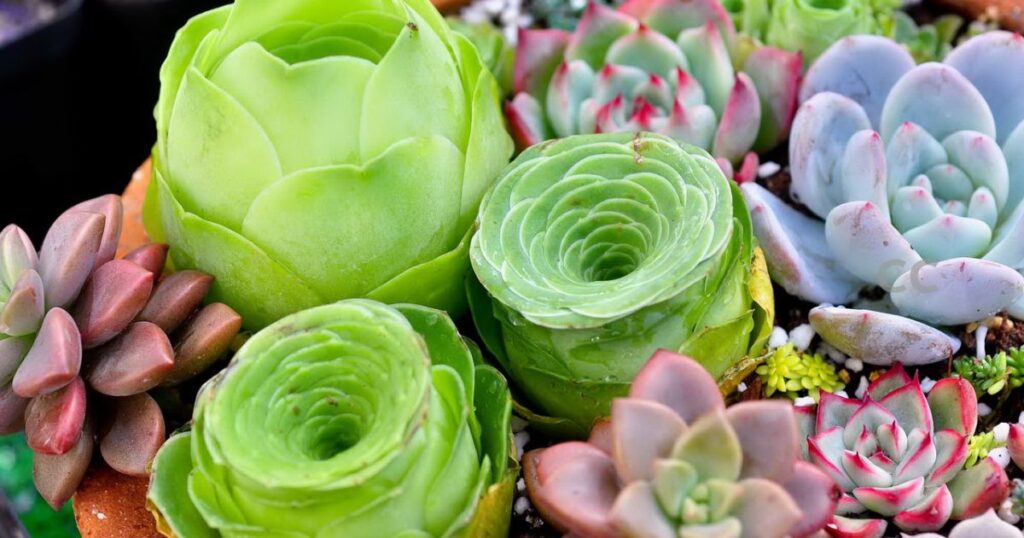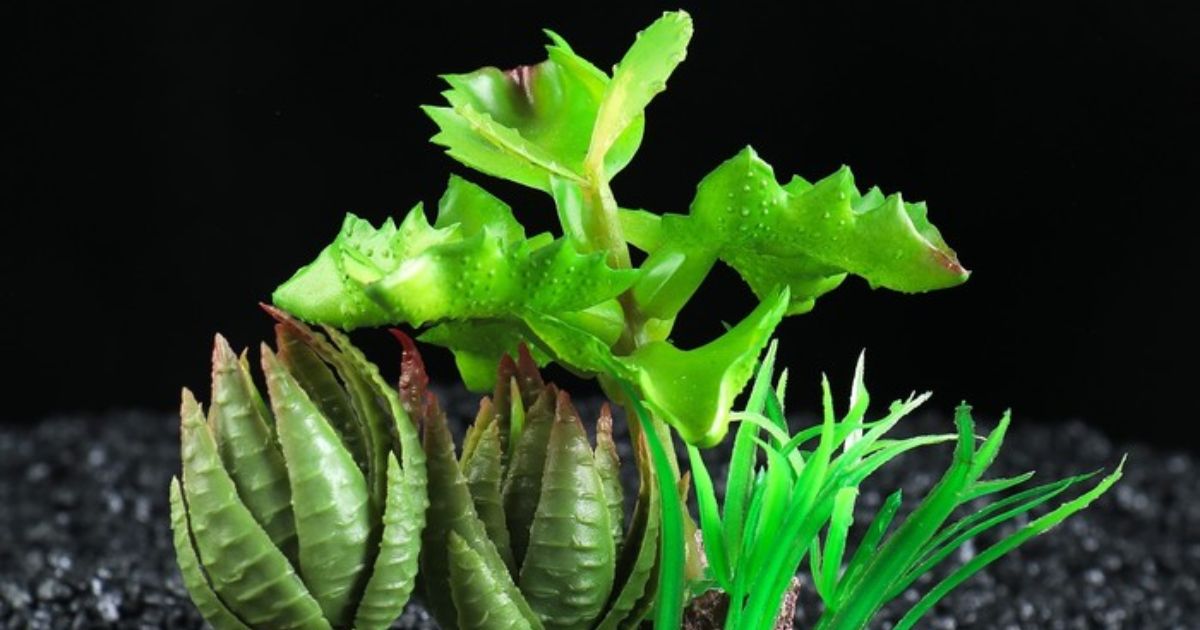Repotting succulents is a common practice that involves transferring a succulent plant from one pot to another. When we talk about “Water Succulents After Repotting”, it refers to the crucial step of providing moisture to the succulent plant shortly after being moved to a new container.
Should You Water Succulents After Repotting? This question often perplexes plant enthusiasts, as the timing and amount of water given to succulents post-repotting can significantly impact their health. Finding the right balance is essential to ensure the succulent receives adequate hydration without risking overwatering, which can be detrimental to these water-storing plants.
Watering succulents after repotting requires careful consideration. It’s important to understand the specific needs of the succulent species you’re dealing with. While some succulents may benefit from a light watering immediately after repotting, others might prefer to be left dry for a few days to allow any damaged roots to heal before introducing moisture.
Should You Need To Water Succulents Before Repotting?
When considering whether to water succulents before repotting, it’s essential to evaluate the current soil moisture. Ideally, you want the soil to be slightly dry, as repotting in overly damp conditions can increase the risk of root damage and rot. Watering a day or two before repotting provides the plant with hydration without saturating the soil, facilitating a smoother transition to its new home.
Exercise caution not to overwater before repotting, as excessive moisture can make the soil clump, making it challenging to separate the roots during the transplantation process. A balance between providing adequate hydration and ensuring the soil isn’t waterlogged is crucial for the overall health of your succulent.
When Should You Water Succulents After Repotting
After the reporting process, the timing of watering is crucial to support the succulent’s adjustment. “When should you water succulents after repotting?” is a question with no one-size-fits-all answer. Generally, it’s advisable to wait a few days before reintroducing water to allow any potential root damage to heal.
Observe the plant for signs of stress, such as wilting or drooping, and use these visual cues to determine the appropriate timing for the first post-repotting watering.
By delaying watering initially, you give the succulent, string of turtles a succulent, an opportunity to recover from the stress of being moved. This cautious approach helps prevent overwatering, a common issue after repotting, as the plant may not immediately require the same amount of moisture as it did in its previous container.”
How Often Should You Water Succulents After Repotting
Determining how often to water succulents after repotting depends on various factors, including the succulent species, local climate, and the type of soil used. As a general guideline, it’s advisable to start with a conservative watering schedule and adjust based on the plant’s response. A common mistake is to continue the pre-repotting watering routine, which may no longer be suitable for the plant’s new conditions.
Creating a schedule that allows the soil to dry out between waterings is often beneficial. This approach prevents overwatering and encourages the development of a robust root system as the succulent seeks water in the soil. Remember, consistency is key, and regular monitoring of the plant’s moisture needs is essential for maintaining its overall well-being.
How To Water Succulents After Repotting

Knowing how to water succulents after repotting involves a careful balance between providing adequate moisture and avoiding waterlogged conditions. Begin by thoroughly wetting the soil, allowing water to reach the roots. It’s crucial to use a well-draining soil mix and ensure the pot has drainage holes to prevent excess water from accumulating.
When watering, aim to moisten the soil evenly, but avoid drenching it. Allow the water to seep through the drainage holes, ensuring the entire root system receives hydration. After watering, observe the succulent for any signs of stress or overwatering. Adjust the frequency and amount of water based on the specific needs of your succulent and the environmental conditions in which it’s placed.
Should I Water Succulents After Repotting?
The decision of whether to water succulents after repotting depends on several factors, including the succulent’s species, the time of year, and the local climate. In some cases, a light watering immediately after repotting can be beneficial, providing the plant with the necessary moisture to aid in its transition. However, for certain succulents, it may be prudent to wait a few days before watering to allow any potential root damage to heal.
Observing the succulent’s response is key. If the plant shows signs of stress, such as wilting or discoloration, it may indicate a need for water. Always consider the specific needs of your succulent and adapt your watering routine accordingly to promote a healthy and successful post-repotting period.
How Often to Water Succulents After Repotting?
Determining how often to water succulents after repotting requires a thoughtful approach. Instead of adhering to a fixed schedule, closely monitor the moisture level in the soil. Allow the top layer of the soil to dry out before considering the next watering, as succulents are adapted to periods of drought.
Overwatering, especially in the initial stages after repotting, can lead to root rot and other issues, so it’s crucial to exercise restraint and adjust your watering frequency based on the specific needs of your succulent.Creating a watering routine that considers the individual requirements of your succulent, coupled with a keen awareness of environmental factors, will contribute to the overall health and resilience of the plant.
What is the Best Way to Water Succulents After Repotting?
The best way to water succulents after repotting involves a combination of factors to ensure optimal hydration without risking root damage. Start by selecting a well-draining soil mix tailored to succulents, and choose a pot with drainage holes to prevent water from accumulating. When watering, do so thoroughly, allowing the soil to absorb moisture evenly.
To enhance the effectiveness of watering, consider the environmental conditions. Succulents may have different water requirements based on factors such as temperature, humidity, and sunlight. Adjust your watering routine accordingly, taking into account the specific needs of your succulent species. By adopting a mindful and adaptable approach to watering, you contribute to the long-term health and vitality of your repotted succulents.
Should I water succulents after repotting?
The question of whether to water succulents after repotting is a common concern among plant enthusiasts. The answer lies in understanding the unique needs of your succulent and the conditions surrounding the repotting process. While some succulents benefit from a light watering immediately after being moved to a new pot, others may require a brief period of dryness to recover from potential root disturbance.
Observation is key; closely monitor your succulents for any signs of stress or dehydration. Adjust your watering routine based on these observations, striking a balance between providing enough moisture for the plant’s well-being and avoiding the pitfalls of overwatering. Ultimately, the decision to water succulents after repotting should be tailored to the individual requirements of your plant.
Table: Summary of Key Considerations for Watering Succulents After Repotting
| Question | Key Considerations |
| Should You Water Succulents Before Repotting? | Evaluate soil moisture; slightly dry soil is ideal. Water a day or two before repotting, avoiding over watering to prevent soil clumping. |
| When Should You Water Succulents After Repotting | Wait a few days post-repotting to allow potential root damage to heal. Observe for signs of stress and adjust the timing based on the succulent’s response. |
| How Often Should You Water Succulents After Repotting | Start with a conservative schedule; adjust based on plant response. Allow soil to dry out between waterings to prevent overwatering and promote robust root development. |
| How To Water Succulents After Repotting | Use well-draining soil; water thoroughly without drenching. Ensure the pot has drainage holes. Adjust watering based on the succulent’s needs and environmental conditions. |
FAQ’S
Can I water my succulents immediately after repotting?
Wait a few days post-repotting to allow any potential root damage to heal before reintroducing water.
How do I know if my succulent needs water after repotting?
Observe signs of stress such as wilting or discoloration; if present, it may indicate a need for water.
Should I follow the same watering schedule after repotting my succulent?
Adjust your watering routine; the plant’s needs may change, and overwatering should be avoided, especially in the initial stages after repotting.
Is it necessary to water succulents differently based on their species?
Yes, succulents have varying water requirements; tailor your watering approach to the specific needs of the succulent species you are caring for.
Can overwatering harm my succulents after repotting?
Yes, overwatering can lead to root rot and other issues. Monitor soil moisture and adjust your watering frequency to prevent excessive water accumulation.
Conclusion
In wrapping up, caring for succulents after repotting involves finding the right balance in watering. It’s like understanding a friend’s needs – some may prefer a drink right away, while others need a little time to settle in. By observing your succulent’s signals and adapting your watering routine accordingly, you create a happy and thriving environment for your plant.
Remember, there’s no one-size-fits-all answer; each succulent is unique. So, pay attention to your plant’s response, watch for signs of stress or thirst, and let the individual needs of your succulent guide your post-repotting care. With a bit of patience and a keen eye, you’ll nurture your succulent into a healthy and resilient green companion.










